In 1868, a banquet was held in New York in honour of Samuel Morse, inventor of Morse code and the single-wire telegraph. Morse’s discoveries, along with those of James Clerk Maxwell, Sir Charles Wheatstone, and others, had made possible the laying of a number of telegraph cables from Newfoundland to Valentia Island, off the coast of Ireland, between 1857 and 1866. But the clipped diction of early telegraphic messages, transmitted in the pops and buzzes of Morse code, belies the project’s enormous influence on the 19th-century imagination. And at Morse’s banquet, guests repeated the by then familiar claim that the trans-Atlantic telegraph had ‘annihilated both space and time in the transmission of intelligence.’ ‘The breadth of the Atlantic,’ they said, ‘with all its waves, is as nothing’.
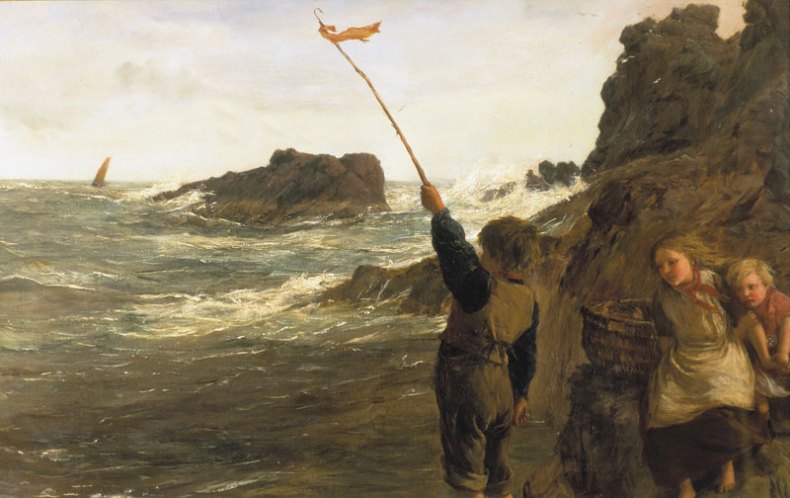
Caught by the Tide (1898), James Clarke Hook
The curators of this compact, playful exhibition have assembled a beautiful assortment of the things that enabled this transoceanic annihilation: bits of gutta-percha-enshrouded wire, the brass fittings of a resistance box, a gleaming battery of Daniell cells, charts of the deep-sea telegraphic plateau. These objects speak both to the dexterity and ingenuity of the telegraph’s operators and inventors, and to the reliance of the telegraphic project as a whole on cottage industry and personal enthusiasm. Wheatstone’s transmitter looks oddly similar to the concertina he invented, for instance, while the Daniell cell involves an unglazed earthenware container and a copper pot. Indeed, the recipe for the coating applied to telegraphic wires is simply ‘one part Stockholm tar, One part resin, Three parts gutta-percha’.
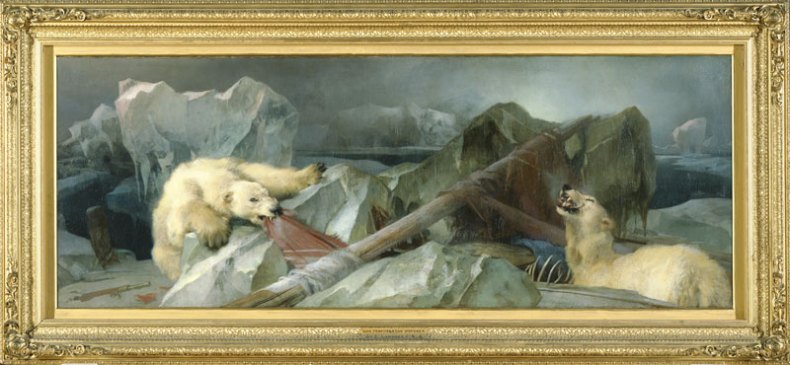
Man Proposes God Disposes (1864), Edwin Landseer. Courtesy Royal Holloway University of London
But if this exhibition is concerned in part with the tangible traces of telegraphy, the curators also hope to show that fragile copper pots and scraps of wire compose only part of the picture. Around the central cabinets in which the objects are displayed, under headings including ‘Distance’, ‘Resistance’, ‘Transmission’, ‘Coding’, and ‘Signals’, the curators have arranged a series of paintings. None of these seem, at first glance, to have much to do with the telegraph. The sea is here in various moods, as depicted by Henry Moore and others. Edwin Henry Landseer’s Man Proposes, God Disposes (1864), in which polar bears gnaw the wreckage of Arctic explorer John Franklin’s ships, is prominent, as is Evelyn de Morgan’s gorgeously iridescent allegory, Moonbeams Dipping into the Sea (1900), in which three linked female figures stretch diagonally across the canvas and even beyond it.
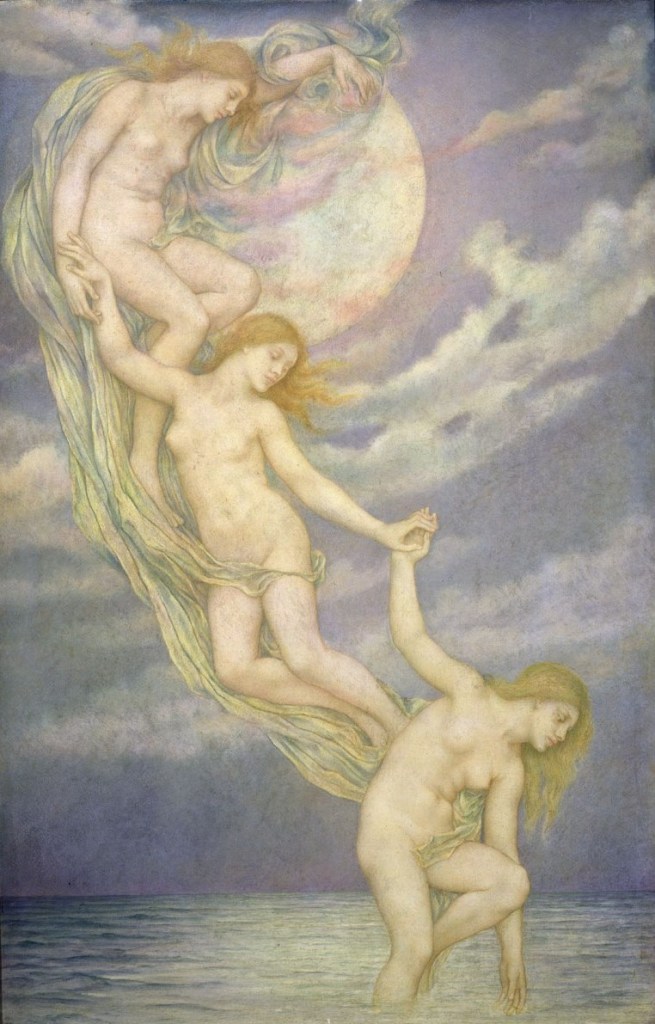
Moonbeams Dipping Into The Sea (1900), Evelyn de Morgan. Courtesy The De Morgan Foundation
While we are shown a literal joining of hands in de Morgan’s painting, the connections she wishes us to perceive are symbolic. This is an aim shared by the curators of this exhibition: the connection between Moonbeams and the transatlantic telegraph is symbolic, of course. But in addition to transmitting messages, the telegraph itself came to symbolise the concept of transmission, and in this way to render newly apparent the idea of connection across space and time. Far, that is, from doing away with time and space, the telegraph tapped into and concentrated the 19th-century obsession with such apparent abstractions. By setting the relics of telegraphic technology in the context of 19th-century painting, what this exhibition suggestively shows is that telegraphic messages were transmitted by a medium that was as conceptual as it was material – seawater, gutta-percha, and copper, but also distance in the abstract.
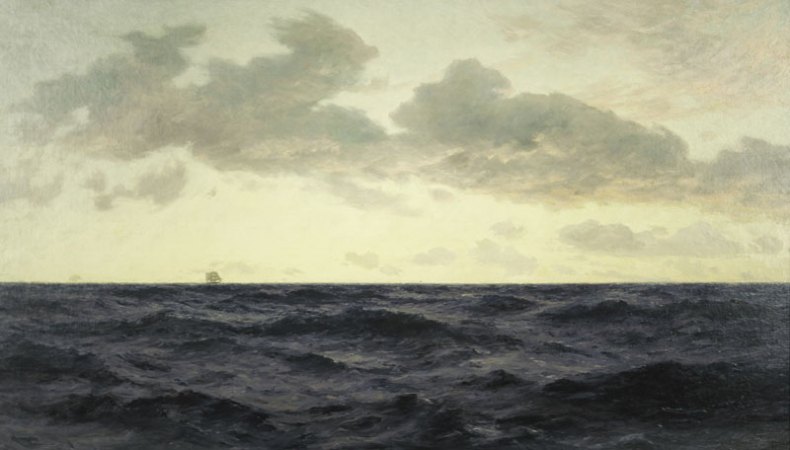
Evening (1898), William Ayerst Ingram
At the heart of this exhibition, then, is the claim that the intense effort to annihilate space and time represented by the transatlantic telegraph grew out of and fed a passion for signifying time and space. Toward the end of the century, commemorating the connection of Europe and America by telegraph, one rhymester still buoyantly recited the cry ‘from shore to shore, / That Time and Space ruled man no more’. Paradoxically, the ready transmission of this poem from shore to shore and across time helps both to prove and to disprove his case.
‘Victorians Decoded: Art and Telegraphy’ is at Guildhall Art Gallery from 20 September 2016–22 January 2017.
Unlimited access from just $16 every 3 months
Subscribe to get unlimited and exclusive access to the top art stories, interviews and exhibition reviews.

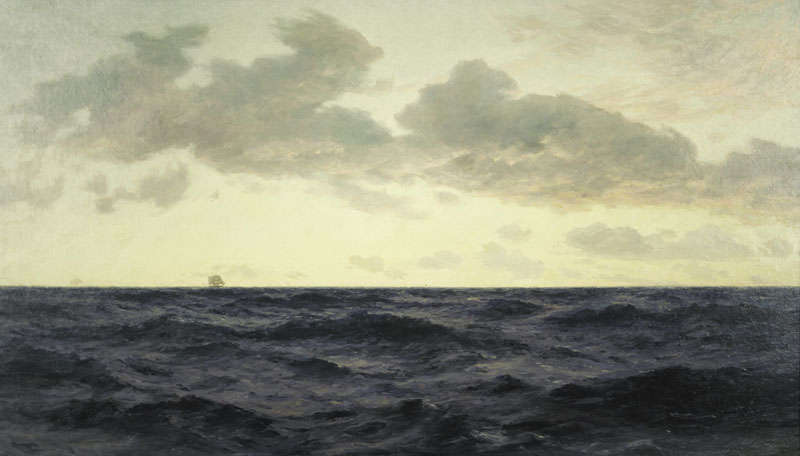
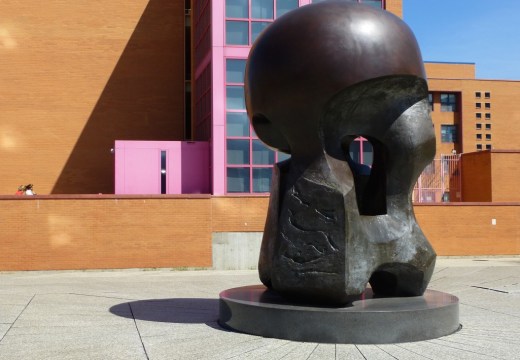
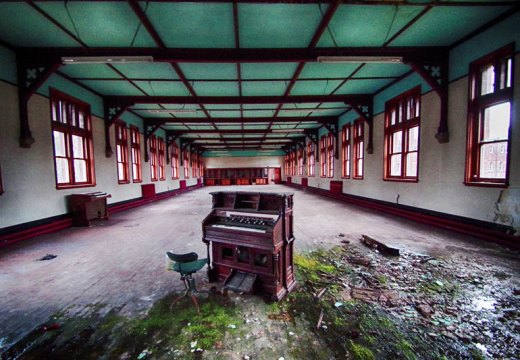
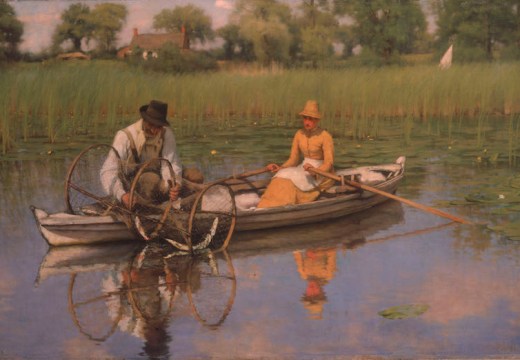









![Masterpiece [Re]discovery 2022. Photo: Ben Fisher Photography, courtesy of Masterpiece London](http://www.apollo-magazine.com/wp-content/uploads/2022/07/MPL2022_4263.jpg)
It’s time for the government of London to return to its rightful home